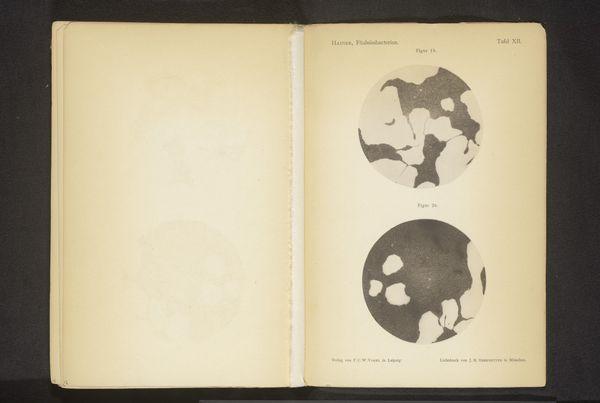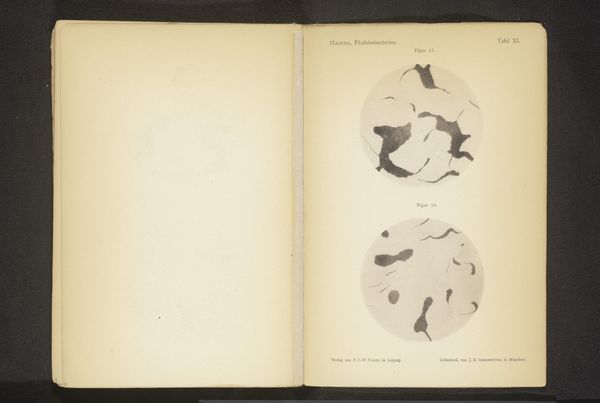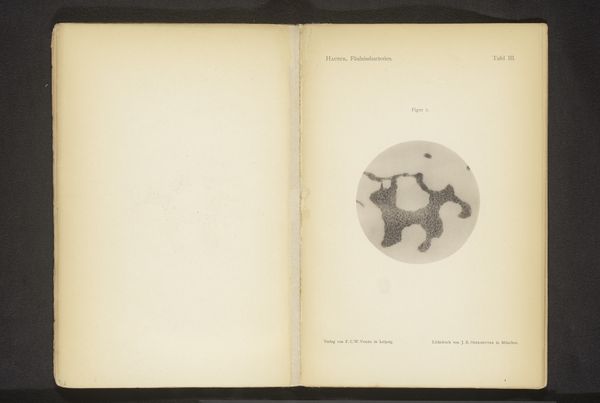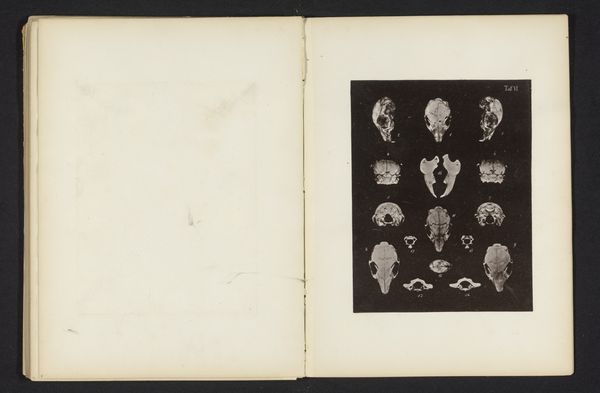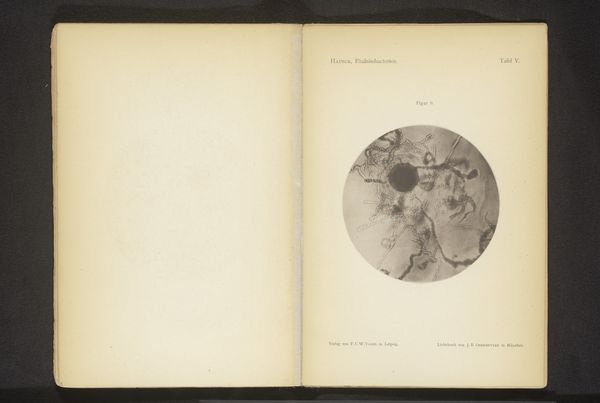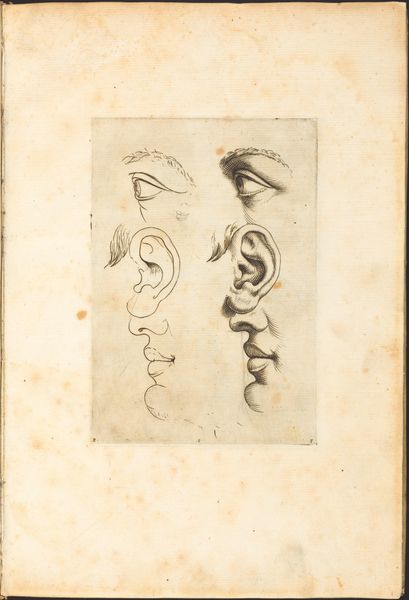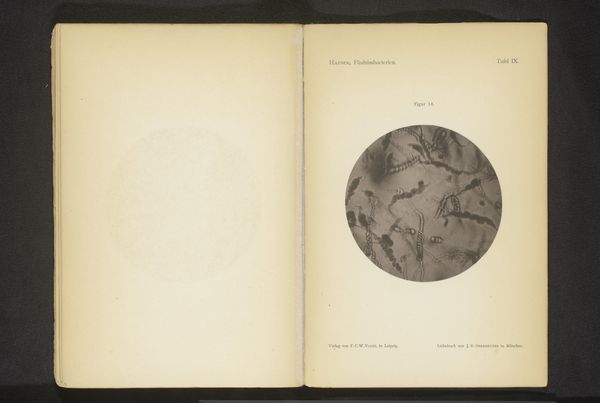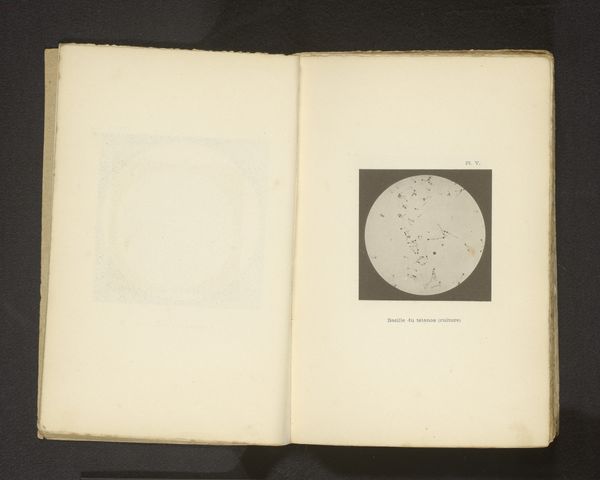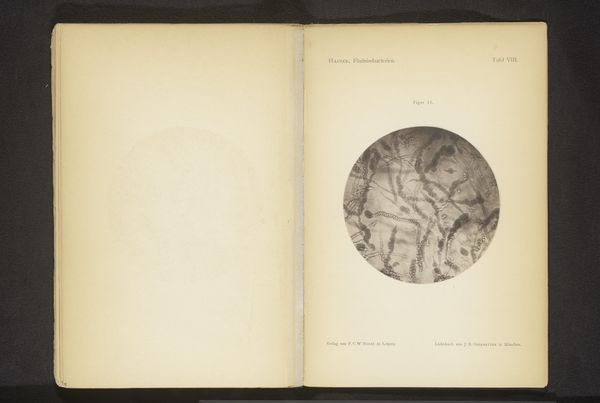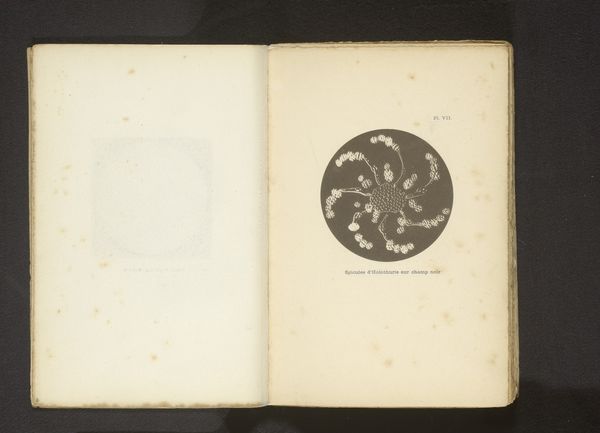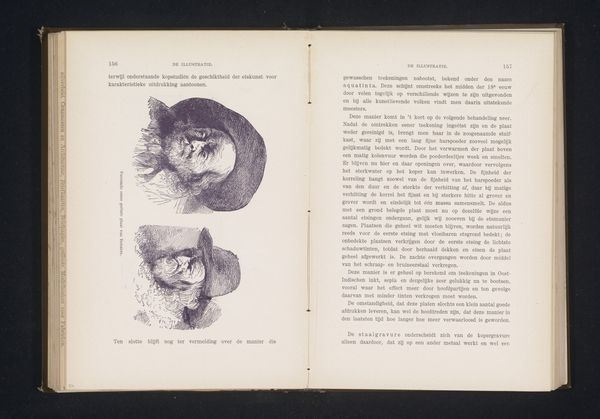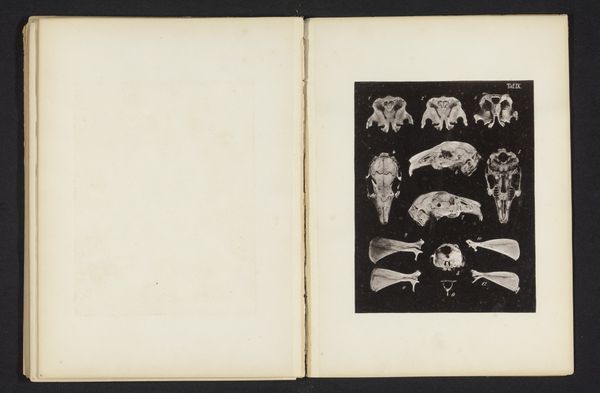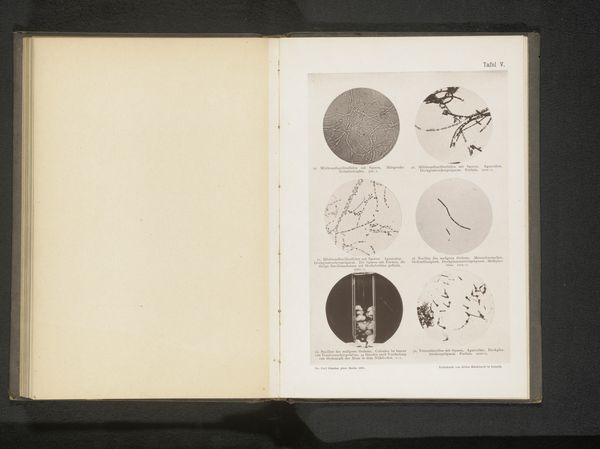
#
aged paper
#
paper non-digital material
#
paperlike
#
personal journal design
#
folded paper
#
thick font
#
publication mockup
#
letter paper
#
paper medium
#
publication design
Dimensions: height 258 mm, width 170 mm
Copyright: Rijks Museum: Open Domain
Here we see two microscopic images of bacteria that cause decay. They were produced in Germany by Gustav Hauser, a pioneer in bacteriology. These images are not just scientific documentation; they’re cultural artifacts. They reflect the late 19th-century obsession with categorizing and understanding the natural world through the lens of science. The rise of bacteriology was pivotal in shaping public health policies, sanitation practices, and even culinary habits. Think of the shift from open markets to controlled food storage. Hauser's images also speak to the institutional history of science. They were produced in a time when universities and research institutions were becoming increasingly important in the production of knowledge. As historians, we can use these images to understand the complex interplay between science, society, and culture. Archival research into Hauser’s publications and correspondence would reveal much more about the scientific and social context in which this image was made. By doing so, we can see how scientific images helped to reshape our understanding of the world.
Comments
No comments
Be the first to comment and join the conversation on the ultimate creative platform.
